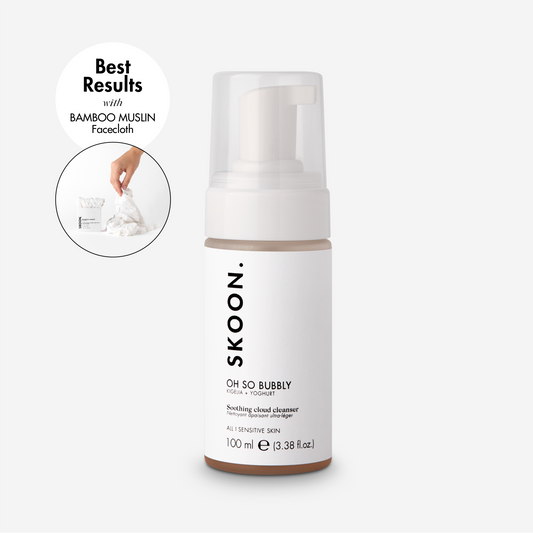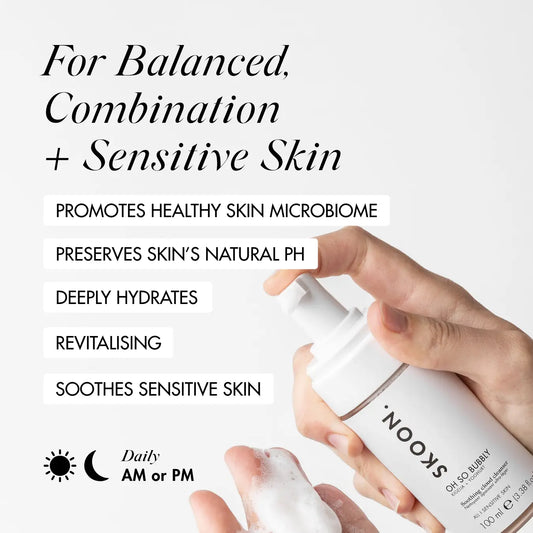Consumer study results
Frequently asked questions
How do exfoliating acids work?
+Exfoliating acids are skin-transforming ingredients that work by lowering your skin's pH to below 4, gently breaking the bonds (the “glue”) that hold dead skin cells together. This process helps remove dull, expired cells to reveal fresh, radiant skin underneath. Your skin naturally renews itself through a process called desquamation, where new cells replace old ones. However, as we age or if this process slows, dead skin cells build up, leading to dullness, breakouts, and uneven texture. Exfoliating acids accelerate this cycle, encouraging your skin to act like its younger, more vibrant self.
The result? Smoother texture, brighter tone, and a glow that keeps your skin looking and feeling its best. Whether you're tackling acne, unevenness, or just maintaining your radiance, these acids are the ultimate refresh button for your complexion.
What are Fruit Acids?
+Fruit acids, scientifically known as alpha-hydroxy acids (AHAs) and beta-hydroxy acids (BHAs), are naturally occurring compounds derived from fruits, sugar, and milk. These water & oil-soluble acids are skincare powerhouses, celebrated for their ability to exfoliate the skin gently yet effectively. By dissolving the "glue" that binds dead skin cells together, fruit acids unveil the fresh, healthy skin hiding beneath the surface.
Why is nighttime exfoliation so essential, and why do experts recommend it?
+Throughout the day, your skin faces UV rays and environmental stressors that cause damage and buildup. At night, your skin enters repair mode, making it the perfect time to apply exfoliators. Leave-on exfoliants help clear away dead skin cells, speed up cell turnover, and allow fresh skin to surface.
By exfoliating at night, you give your skin time to absorb the active ingredients, repair daily damage, and reveal a smoother, brighter complexion by morning. Plus, exfoliation boosts circulation, preps your skin to absorb skincare products more effectively, and leaves you with a healthy, radiant glow.
Make nighttime exfoliation your secret weapon for flawless, glowing skin!
Why do exfoliating acids cause tingling or stinging?
+1. Tingle
A tingle is the mildest sensation, lasting no more than a minute. It’s a light, fleeting feeling that indicates the product is working without causing visible redness. Tingling is generally normal, especially if you're new to acids, but may also suggest a slightly delicate moisture barrier.
2. Stingle
More noticeable than a tingle, a stingle feels like mild prickling and can last up to two minutes. Skin may appear slightly pink or feel warm but should settle quickly. While normal for many products, frequent stingling or prolonged sensations may indicate a compromised moisture barrier. Those with sensitive skin should reduce usage or opt for a gentler formula if this occurs.
3. Sting/Burn
Stinging or burning is the most intense and concerning reaction, often lasting longer than a minute and accompanied by redness or heat. This is a clear sign to stop use immediately and rinse the product off.
Pro Tip: It's normal for acids to cause a mild tingle, especially for beginners. However, if the stinging worsens or persists with continued use, it’s a sign your skin needs a break. Listen to your skin and adjust your routine as needed to maintain a healthy balance.

How does exfoliating with FRUITFUL RADIANCE on Night 1 of Skin Cycling reset and refresh your skin?
+Kick off your Skin Cycling routine with FRUITFUL RADIANCE, designed to sweep away dead skin cells and boost cell turnover. This powerhouse exfoliator refines texture, brightens your complexion, and preps your skin to absorb the nourishing ingredients in the days ahead. It’s the perfect way to reset and reveal a fresh, glowing canvas!

At what step in my routine should I use acids?
+Acids should be applied right after cleansing, before anything else touches your skin! Here’s how to incorporate them into your routine for maximum impact:
1. Cleanse first: Start with a clean, damp face to prep your skin.
2. Apply acid serum: Your exfoliating acid serum should be the first product you apply, right after cleansing. Let it absorb for about one minute— no rinsing.
3. Follow with hydration: If you’re using a hydrating serum, apply that next.
4. Seal with cream: Finish with your face cream to lock in all that goodness.
The key is to let your acids work their magic on a fresh, clean surface before layering on anything else. Your skin will thank you with a smoother, glowing complexion!
Can I use acids on my neck & décolletage? What about my body?
+Yes, acids can be used on your neck and décolletage, but patch test first! The skin in these areas can be more sensitive than your face, so start with a gentler formula or lower concentration. You might also want to exfoliate less frequently to avoid irritation.
When it comes to your body, acids are fantastic for smoothing skin texture! They’re especially effective at tackling keratosis pilaris (those little bumps on the arms or legs). By sloughing off dead skin, acids can help create smoother, softer skin all over. Just remember to follow up with sunscreen—your body needs protection too!
How to exfoliate per your skin type?
+
Why do natural liquid exfoliants change colour over time?
+Natural liquid exfoliants may change colour over time due to their composition, exposure to environmental conditions, and natural aging processes. Here’s why this happens and how you can manage it:
1. Oxidation
Cause: Ingredients like plant extracts and fruit acids can oxidize when exposed to air.
Effect: The product may lighten or darken, often turning shades of yellow, brown, or orange.
2. Natural Ingredients
Cause: Botanical extracts such as Vaccinium Myrtillus Fruit Extract, Sugar Cane Extract, Orange Fruit Extract, Lemon Fruit Extract, Sugar Maple Extract, Devil’s Claw Root Extract, and Himanthalia Elongata Extract contain natural pigments that can degrade or interact with other components over time.
Effect: Colour changes can range from subtle to more pronounced, depending on the extract.
3. pH Shifts
Cause: Formula instability or pH changes can alter the chemical structure of active ingredients.
Effect: Colour changes are especially noticeable in exfoliants containing acids like AHAs (alpha hydroxy acids) or BHAs (beta hydroxy acids).
4. Light and Heat Exposure
Cause: Natural exfoliants may include photosensitive compounds that degrade when exposed to light or heat.
Effect: Accelerated discolouration, particularly if the product is stored improperly.
How to prevent or manage colour changes
- Store Properly: Keep the product in a cool, dark place. For added protection, store it in its original box.
- Use Air-Tight Packaging: Opt for products with airless pumps or tightly sealed bottles to minimise oxidation.
- Follow Usage Guidelines: Use the product within its recommended timeframe for maximum stability and efficacy.
- Limit Light and Heat Exposure: Avoid storing the product in direct sunlight or warm environments.
Skincare ingredients that should NOT be mixed
+
Breakout/Reaction: Appears in new areas, lasts beyond 6 weeks, and may include painful cysts, irritation, or rashes.

✔ Retinoids (RetinAL, Retinol, Tretinoin)
✔ Exfoliating Acids (AHAs like Glycolic Acid, BHAs like Salicylic Acid)
✔ Vitamin C (L-Ascorbic Acid)
✔ Benzoyl Peroxide, Azelaic Acid, Enzymes
• Stress & diet: (dairy, high-glycaemic foods)
• Clogged pores: (heavy products, comedogenic ingredients)
• Bacteria & environmental factors: (humidity, pollution)

• Use gentle, hydrating skincare alongside actives.
• Avoid over-exfoliation and harsh scrubs.
• Stay consistent—purging is temporary!

• Check for comedogenic ingredients.
• Patch test before full use.
Real Results - User Experience
Complete the routine
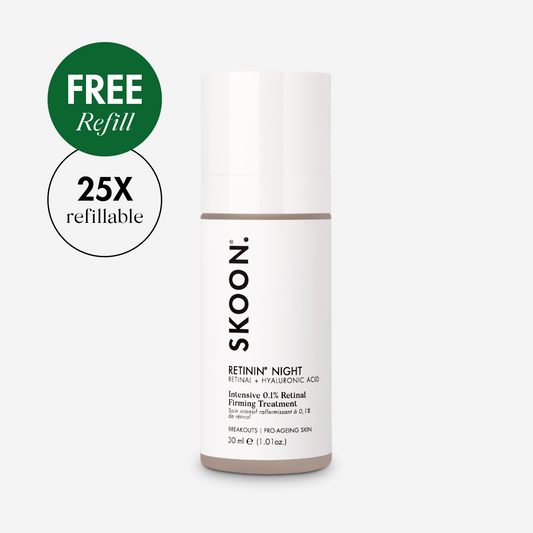
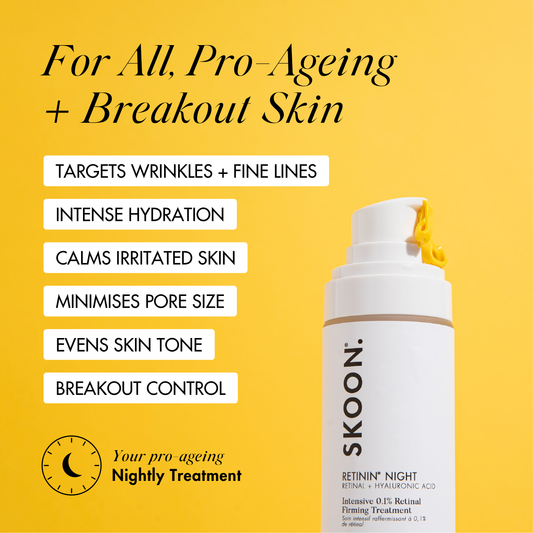
RETININ® NIGHT Intensive 0.1% Retinal Firming Treatment
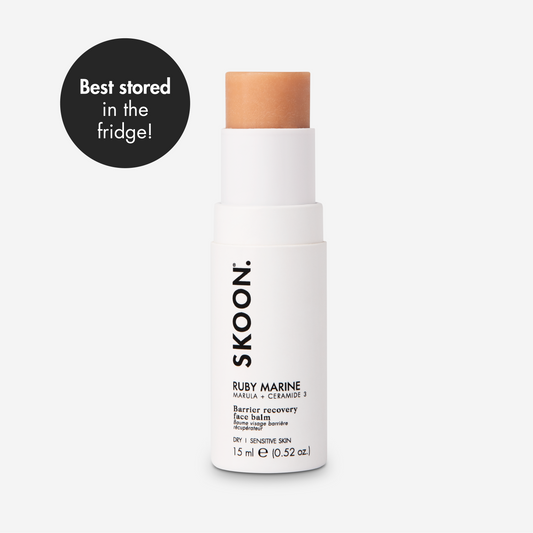
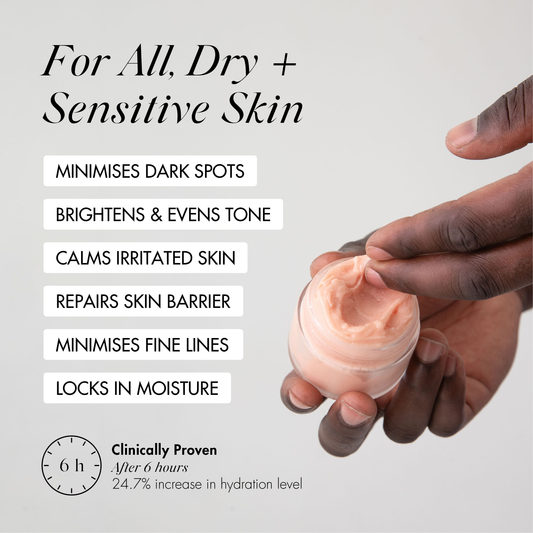
RUBY MARINE Barrier Recovery Face Balm
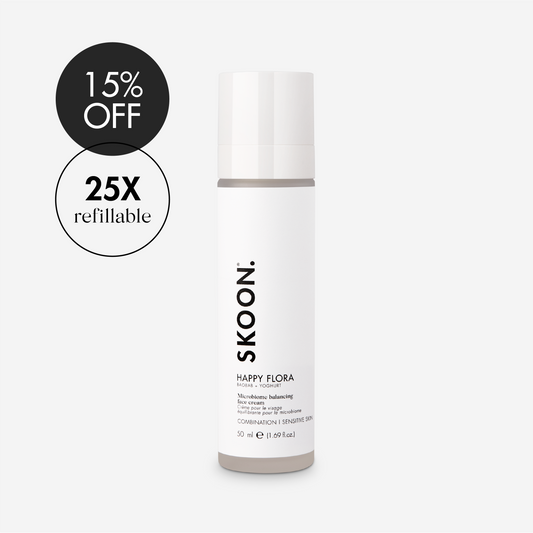

HAPPY FLORA Microbiome Balancing Face Cream
